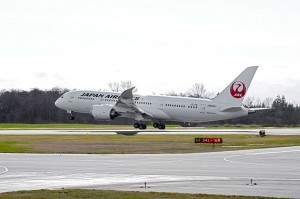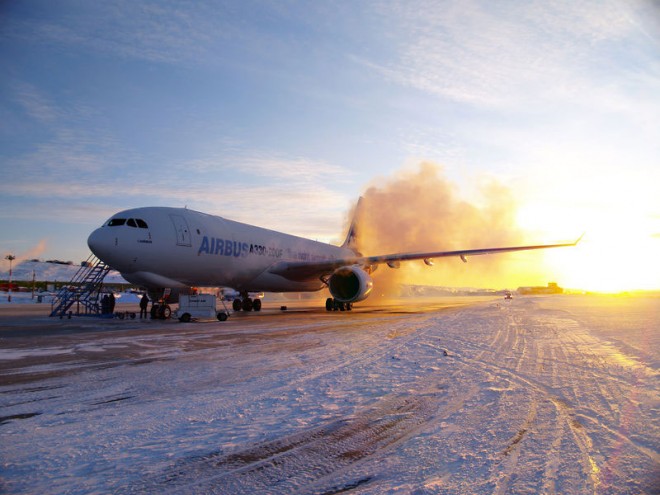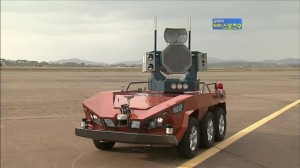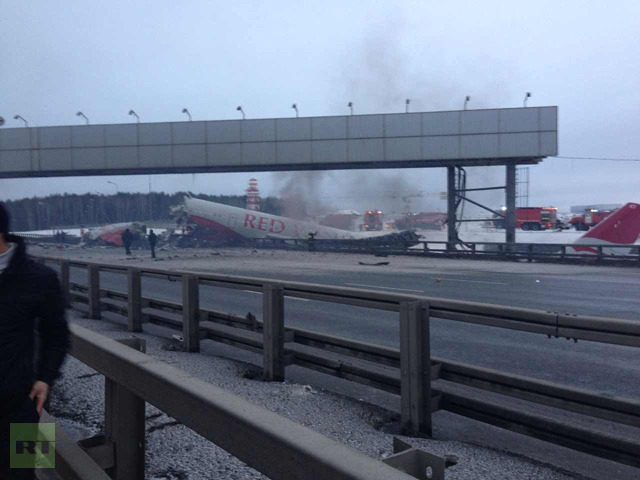 The new year is off to a rough start for Boeing’s new 787 Dreamliner, with one plane catching fire and another being sidelined by a fuel leak discovered just after it left the gate.
The new year is off to a rough start for Boeing’s new 787 Dreamliner, with one plane catching fire and another being sidelined by a fuel leak discovered just after it left the gate.
The problems started January 8th at Boston’s Logan International Airport when a 787 operated by Japan Airlines experienced an electric fire at the gate after everyone had disembarked. The very next day, another 787 operated by the same airline at the same airport had to return to the gate after the plane lost about 40 gallons of fuel.
The 787 has been under intense scrutiny throughout its long — often delayed — development and testing, and this isn’t the first, or even second, time there’s been an electrical fire aboard a Dreamliner. But the problems are not necessarily cause for concern. Aviation analyst Scott Hamilton says it is not unusual for a new airplane to experience problems early on.
“New airplanes have almost always had teething issues,” he says.
Despite lengthy and thorough flight testing, daily use by the airlines always finds new issues, Hamilton says. “Once the airplane goes into airline operations, and you have the rigors of airliner operations, which is really the ultimate flight test, problems emerge.”
The Dreamliner that caught fire on the 8th had been delivered to JAL last month. Employees cleaning the plane smelled smoke, and a mechanic discovered a battery had caught fire. The battery is in the same electronics and equipment bay where a fire forced the landing of a 787 flight test aircraft in 2010. That fire was traced to a foreign object in the electronics bay.

 Don’t be freaked out by that eerie video of a Russian airliner skidding off an icy runway. Last year will go down as the safest year for airline travel since the dawn of the jet age more than 50 years ago.
Don’t be freaked out by that eerie video of a Russian airliner skidding off an icy runway. Last year will go down as the safest year for airline travel since the dawn of the jet age more than 50 years ago.
 The Korean Atomic Energy Group and LIG Nex1 (an aerospace and defense subsidiary of LG Corp) have jointly developed what they are calling the world’s first bird strike defense robot. Birds are a major headache around military air bases and civilian airports all over the world, as they can cause significant damage when they collide with aircraft or get sucked into engines. The robot is a six-wheeled unmanned ground vehicle (UGV) that uses a combination of directional acoustics and laser patterns to scare birds away.
The Korean Atomic Energy Group and LIG Nex1 (an aerospace and defense subsidiary of LG Corp) have jointly developed what they are calling the world’s first bird strike defense robot. Birds are a major headache around military air bases and civilian airports all over the world, as they can cause significant damage when they collide with aircraft or get sucked into engines. The robot is a six-wheeled unmanned ground vehicle (UGV) that uses a combination of directional acoustics and laser patterns to scare birds away. BARKSDALE AIR FORCE BASE, La. — With more than 60 aircraft assigned here and many others that use the second largest flightline in the Air Force, a single program helps keep engine damage from foreign object debris to a minimum.
BARKSDALE AIR FORCE BASE, La. — With more than 60 aircraft assigned here and many others that use the second largest flightline in the Air Force, a single program helps keep engine damage from foreign object debris to a minimum. A passenger jet crashed after making a hard landing at Moscow’s Vnukovo Airport. At least four people were killed and four critically injured, says the Interior Ministry. Officials believe the cause could be pilot error, however there are conflicting reports that the plane was spewing black smoke prior to landing.
A passenger jet crashed after making a hard landing at Moscow’s Vnukovo Airport. At least four people were killed and four critically injured, says the Interior Ministry. Officials believe the cause could be pilot error, however there are conflicting reports that the plane was spewing black smoke prior to landing.  Helping To Train Analysts To Sift Through ‘Enormous Amount’ Of Video From Drones Anyone who’s ever watched a sporting event … at least with any knowledge of the broadcasting industry … has been impressed with the ability of a producer to pinpoint multiple angles of a play to be shown almost immediately in instant replay as the announcers analyze the action. That skill has also caught the attention of the U.S. military, which has an enormous amount of footage coming in daily from drone flights over places like Afghanistan.
Helping To Train Analysts To Sift Through ‘Enormous Amount’ Of Video From Drones Anyone who’s ever watched a sporting event … at least with any knowledge of the broadcasting industry … has been impressed with the ability of a producer to pinpoint multiple angles of a play to be shown almost immediately in instant replay as the announcers analyze the action. That skill has also caught the attention of the U.S. military, which has an enormous amount of footage coming in daily from drone flights over places like Afghanistan.


